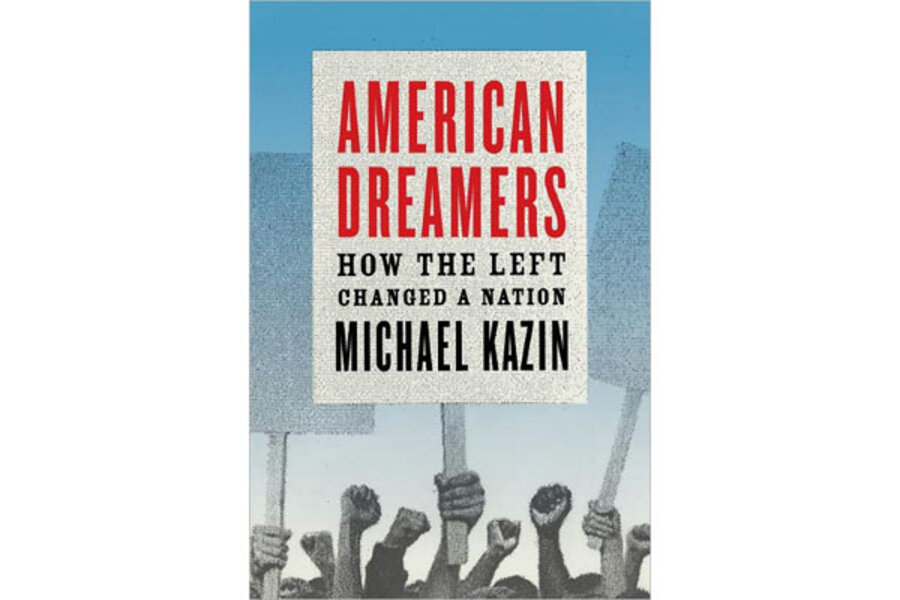American Dreamers: How the Left Changed a Nation
Loading...
Michael Kazin is a history professor at Georgetown University. His most recent book before American Dreamers is a biography of William Jennings Bryan, a detailed examination of a fascinating individual – in other words, something focused and concrete. “American Dreamers” comes out at the opposite end of the scholarly pipeline – theoretical and scattered. After all, it is mighty difficult to even define an entity as amorphous as “the Left,” much less to determine how such an entity “changed” anything – particularly a sprawling, diverse nation. Yet, despite the challenges, Kazin has produced an interesting book.
Here is how Kazin defines “the left” for purposes of his stab at intellectual history: the “social movement, or congeries of mutually sympathetic movements, that are dedicated to a radically egalitarian transformation of society.” Probably the key word is “egalitarian.” The folks studied by Kazin, both already famous and mostly obscure, have sought the leveling of differences between the wealthy and the poor, men and women, Caucasians and African Americans, corporate chief executives and assembly line laborers, school district chancellors and classroom teachers – the list of dichotomies could go on and on.
For readers of intellectual history wondering how a certain set of political viewpoints became known as “leftist” or “liberal” and those believing something vastly different became known as “the right,” or “conservative,” Kazin settles some of the mystery. He says the word “left” entered the French language first, “coined in 1789 to designate where the radical faction sat in the French National Assembly.” He says “left” entered common usage in the United States during the 1930s.”
Those the term allegedly described did not like it so much, Kazin says. They preferred terms such as “radical” or “revolutionary” or “progressive.” Some preferred even narrower terms that proclaimed membership in a specific group, such as “communist” or “socialist” or “anarchist.” Kazin understands that lumping together (to use a contemporary example) Barack Obama and Noam Chomsky is filled with pitfalls, but, hey, a historian’s job is to find common parlance. As a result, Kazin seems justified in stating that the “egalitarian dreamers who form an unbroken chain from the 1820s to the present need a common name. ‘Left’ is what their counterparts in other nations would call themselves, and there is something to be said for adhering to universal custom.”
After Kazin establishes the foundation, he proceeds in an almost entirely chronological manner. He lumps social movements and the groups that spawned them into bunches of decades, starting with the 1820s through the 1840s, and ending with the 1980s through today.
Throughout the book, Kazin distinguishes between political change and cultural change. Increased individual sexual freedom, the ability to seek a legal abortion, and the right to adopt an offbeat personal appearance without being fired from a job or expelled from school all count as cultural change, whether the reader counts those changes as positive or negative. The ultimate political change – a more egalitarian society – seems pretty much unrealized.
Toward the end of the book, Kazin allows himself personal reflection and a tad of preaching, noting that “at what may be the nadir of the historical left, perhaps utopia could use a few words in its defense. A world of freebooting capitalisms has delivered neither material abundance nor social harmony to most of the world’s people. Failed states, religious wars, environmental disasters, clashes between immigrants and the native-born are common features of current history, as they were in earlier times.” Those shortfalls do not justify giving up, Kazin says, stating elegantly that those who believe “there is no alternative to chronic crisis except to somehow muddle through exacerbate the problem.”
The left, or more specifically those termed by Kazin as practitioners “of the non-Communist radical faith” must continue to push for change, he believes. Why? Because, Kazin writes: “Workers who organize themselves could brake the wild ride of the free marketers, open-minded secularists might form a third force to disarm the armies of fundamentalists, pacifists could challenge the myth that perpetual war delivers either national security or global democracy.”
Kazin knows his book will spawn disagreements. He says at the beginning that he hopes it “invites plenty of argument and debate – be it passionate, reasonable or both.” It probably will. An opening quotation from Richard Rorty cited by Kazin summarizes the value of that debate perhaps better than any other passage in the book: : “You have to describe the country in terms of what you passionately hope it will become, as well as in terms of what you know it to be now. You have to be loyal to a dream country rather than one to which you wake up every morning.”
Steve Weinberg is a member of the National Book Critics Circle.






